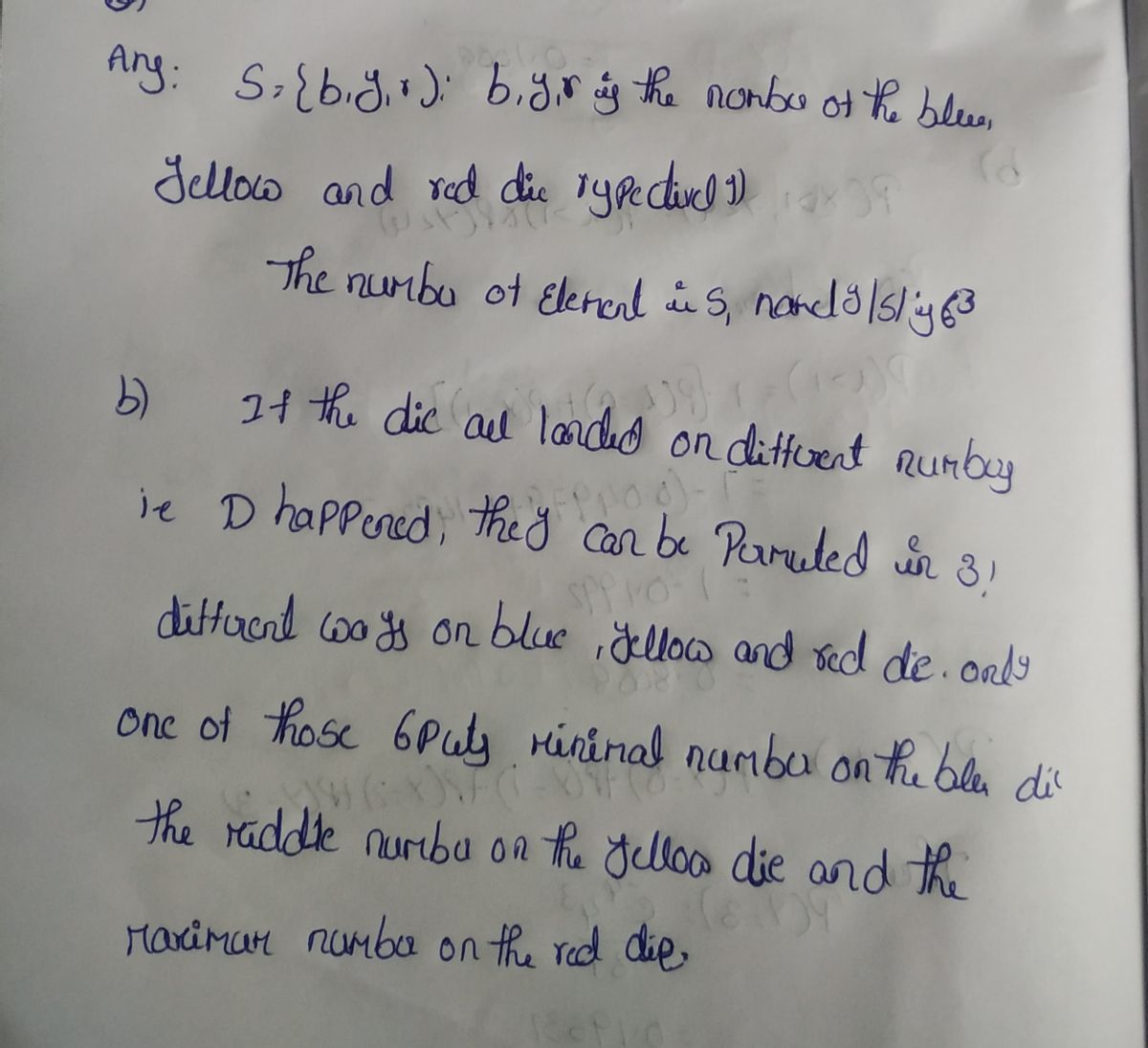3.23. A red die, a blue die, and a yellow die (all six sided) are rolled. We are interested in the probability that the number appearing on the blue die is less than that appearing on the yellow die, which is less than that appearing on the red die. That is, with B, Y, and R denoting, respectively, the number appearing on the blue, yellow, and red die, we are interested in P(B < Y < R). a. What is the probability that no two of the dice land on the same number? b. Given that no two of the dice land on the same number, what is the conditional probability that B
3.23. A red die, a blue die, and a yellow die (all six sided) are rolled. We are interested in the probability that the number appearing on the blue die is less than that appearing on the yellow die, which is less than that appearing on the red die. That is, with B, Y, and R denoting, respectively, the number appearing on the blue, yellow, and red die, we are interested in P(B < Y < R). a. What is the probability that no two of the dice land on the same number? b. Given that no two of the dice land on the same number, what is the conditional probability that B
A First Course in Probability (10th Edition)
10th Edition
ISBN:9780134753119
Author:Sheldon Ross
Publisher:Sheldon Ross
Chapter1: Combinatorial Analysis
Section: Chapter Questions
Problem 1.1P: a. How many different 7-place license plates are possible if the first 2 places are for letters and...
Related questions
Question
How can I solve the letters b and c from this question 3.23?

Transcribed Image Text:3.23. A red die, a blue die, and a yellow die (all six sided) are rolled. We are
interested in the probability that the number appearing on the blue die is less
than that appearing on the yellow die, which is less than that appearing on the
red die. That is, with B, Y, and R denoting, respectively, the number appearing
on the blue, yellow, and red die, we are interested in P(B<Y<R).
a. What is the probability that no two of the dice land on the same
number?
b. Given that no two of the dice land on the same number, what is the
conditional probability that B <Y<R?
c. What is P(B <Y<R)
Expert Solution
Step 1

Step by step
Solved in 2 steps with 2 images

Recommended textbooks for you

A First Course in Probability (10th Edition)
Probability
ISBN:
9780134753119
Author:
Sheldon Ross
Publisher:
PEARSON


A First Course in Probability (10th Edition)
Probability
ISBN:
9780134753119
Author:
Sheldon Ross
Publisher:
PEARSON
